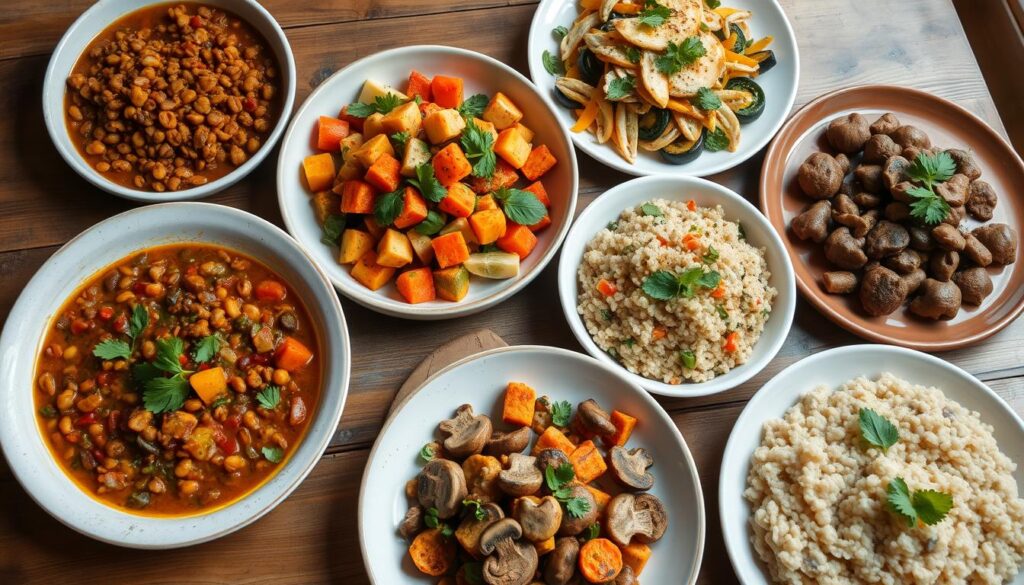Italian cuisine, with its emphasis on quality ingredients and thoughtful preparation, provides an excellent foundation for creating sophisticated vegan dishes. The tradition of pasta making, in particular, offers numerous opportunities for plant-based adaptation while maintaining the integrity of traditional Italian cooking methods.
Understanding Italian Pasta Principles
The foundation of excellent pasta dishes lies in understanding fundamental Italian cooking principles. These include the importance of proper pasta preparation, sauce consistency, and the relationship between pasta shapes and their accompanying sauces.
Fresh Pasta Preparation
Creating vegan pasta from scratch requires attention to several key factors:
Traditional pasta dough can be successfully prepared without eggs by carefully adjusting hydration levels and incorporating alternative ingredients. The resulting pasta maintains the desired texture and cooking properties while adhering to vegan standards.
The selection of flour significantly impacts the final product. Various flour combinations can be employed to achieve specific textural characteristics while maintaining traditional qualities.
Essential Sauce Preparations
Several classic Italian sauces naturally align with vegan preparation methods:
Marinara This fundamental sauce showcases the importance of high-quality tomatoes and proper cooking technique. The development of flavor depends on appropriate heat management and ingredient sequencing.
Arrabbiata This spicy preparation demonstrates how simple ingredients, properly prepared, create sophisticated results. The balance of heat and acidity requires careful attention.
Creamy Sauce Alternatives
Traditional cream-based sauces can be successfully adapted:
Cashew Cream Base This versatile preparation serves as a foundation for various sauce adaptations. Proper soaking and processing techniques ensure smooth, creamy results.
Cauliflower Alternatives Properly prepared cauliflower creates silky sauces while adding nutritional benefits. The cooking method significantly impacts the final texture.
Regional Specialties
Various Italian regions offer distinctive preparations:
Sicilian Preparations These often feature eggplant, tomatoes, and capers, creating naturally vegan options that reflect regional traditions.
Northern Italian Dishes These preparations frequently incorporate mushrooms and herbs, adapting well to vegan interpretation.
Pasta Selection Principles
The choice of pasta shape impacts the dining experience:
Long Pasta Varieties These require specific sauce consistencies for proper coating and consumption. The relationship between pasta shape and sauce thickness requires careful consideration.
Short Pasta Options These shapes hold different sauce types effectively, requiring appropriate selection for optimal results.
Professional Preparation Methods
Several factors contribute to successful execution:
Temperature Management Proper control of cooking temperatures ensures optimal sauce development and pasta preparation.
Timing Considerations Coordinating component preparation enables proper final assembly and service.
Ingredient Selection
Quality ingredients significantly impact results:
Olive Oil Selection The choice of olive oil affects both cooking results and final flavor profiles. Different applications may require different types of oil.
Tomato Options Various tomato products serve different purposes in sauce preparation. Understanding these differences enables optimal selection.
Traditional Techniques
Several methods ensure authentic results:
Sauce Development Proper ingredient sequencing and cooking methods develop appropriate flavor profiles.
Pasta Cooking Correct water temperature and salt levels significantly impact final texture.
Contemporary Adaptations
Modern approaches offer additional options:
Alternative Ingredients Contemporary products can enhance traditional preparations while maintaining authenticity.
Updated Techniques Modern equipment can facilitate traditional methods while ensuring consistent results.
Professional Tips for Success
Several factors contribute to optimal outcomes:
Water Management Proper pasta water consistency creates appropriate sauce emulsion.
Temperature Control Careful heat management ensures proper sauce development.
Service Considerations
Several factors affect final presentation:
Temperature Maintenance Proper serving temperature significantly impacts dish enjoyment.
Plating Methods Traditional presentation techniques enhance the dining experience.
Looking Forward
The adaptation of traditional Italian pasta dishes to vegan preparation demonstrates the versatility of this sophisticated cuisine. Through careful attention to technique and ingredient selection, one can create authentic Italian pasta dishes that satisfy both traditional standards and modern dietary preferences.
Share your Italian cooking experiences with #VeganItalian #PlantBasedPasta #VeganMediterranean.






